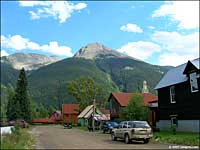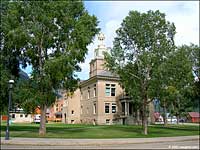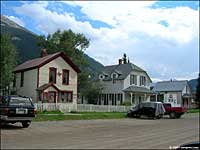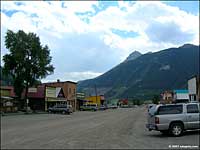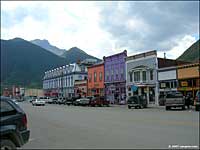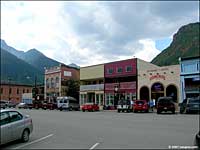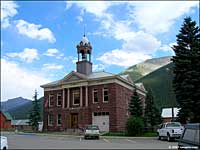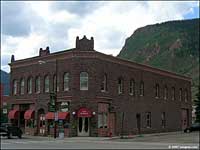
Silverton, Colorado

Looking down on Silverton from the south
Silverton has quite a bit of Victorian charm to go with its' unequaled natural beauty and unique mining history. Downtown is the infamous Blair Street Bordello District full of singular gift shops and galleries stuffed with the works of many local artists (but no, the loose women are all gone). Nearby is the Kendall Mountain (Silverton) Ski Area, for skiing the way it used to be. Durango Mountain Resort is about 23 miles south of town on the way to Durango.
From May to October, quite a few folks (some 200,000 in an average year) arrive in town via the Durango & Silverton Narrow Gauge Scenic Railroad. Some of these folks just make a one-day round trip, some lay over for a night or two, some get off and take the bus back to Durango. This is a very popular trip and the number of tourists in town reflects that. In the winter the local population drops way off, something to do with that 9,308 foot elevation surrounded by high mountains. Winter can be very grueling.
Silverton was founded in 1874, after a good strike of gold ore. Over the years, a lot of gold, silver, lead, zinc, and iron was dug out of the hills around here. For the first few years freight in and out of Silverton traveled by stagecoach, horse-drawn wagon or on horseback. The Denver and Rio Grande arrived in 1882 and freight prices dropped 80% overnight. The town boomed with miners making $3 to $4 per day (double what they could make doing anything else). But the cost was high: 12 hour days, six day weeks in dark, narrow holes in the ground doing back-breaking labor. And many miners died from inhaling the dust in the tiny, poorly ventilated shafts.
Because of the altitude, vegetable farming simply wasn't workable so all the food had to be brought in from outside. Then came the flu pandemic in October, 1918. In Silverton, 3 out of 4 people got sick, 1 in 10 died. It was probably the highest mortality rate in all of America. Some families tried to escape the pestilence by climbing over the mountains to the north but most were turned back by armed guards patrolling the area around Ouray.

Silverton Town Hall, built in 1908

One of the churches on the north side of town
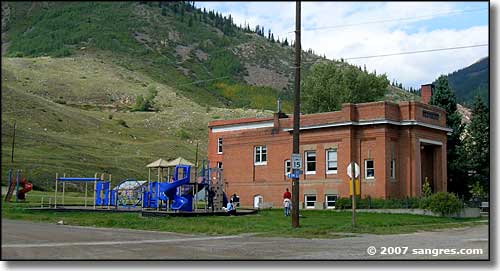
I think this is the library
As the mines petered out, the folks slowly left Silverton and headed for places somewhat less remote. Ironically, it was the very remoteness that saved Silverton for us today and preserved so much of the town's Victorian heritage. In driving through Silverton as I did in early September, 2007, I was surprised at the amount and state of preservation of the Victorian architecture still standing and how much of it is still lived in.
Silverton can be reached via the San Juan Skyway most of the year (except when the passes are buried in fresh fallen snow). But for the most part, town is an excellent jumping off point for adventures in the heart of the San Juan Mountains. The ghost towns of Eureka, Animas Forks and Howardsville are close by. There are many old mining areas around and their dumps are full of treasures for the rock collector types. Silverton also has a reputation as "the Jeeping capital of the world." The famous Alpine Loop connects Silverton with Ouray and Lake City through some pretty incredible alpine scenery, but you don't want to try it in your typical city vehicle.
Silverton has been known to host a Highlands International Fencing Tournament (usually in the early spring). There is also an excellent theater group in town doing productions throughout the year.
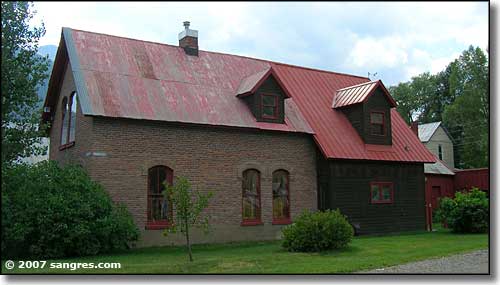
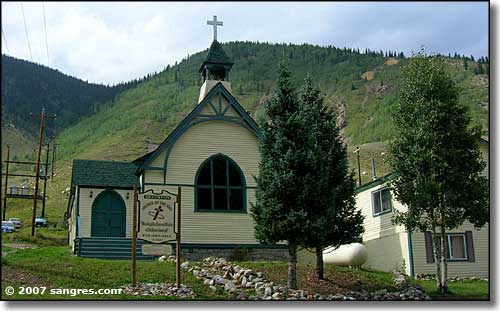
Another church on the north side of town
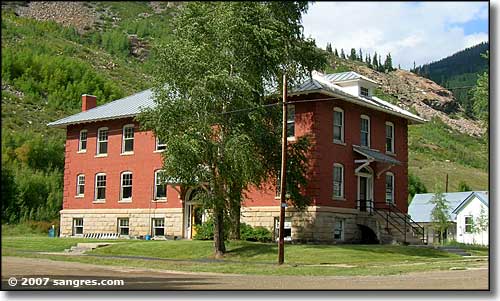
The olde schoolhouse
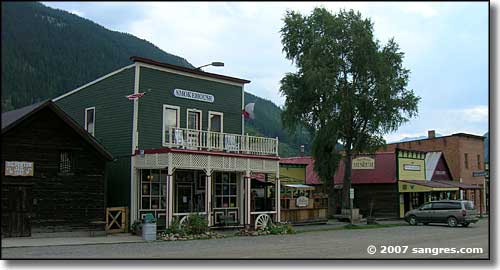
On Blair Street
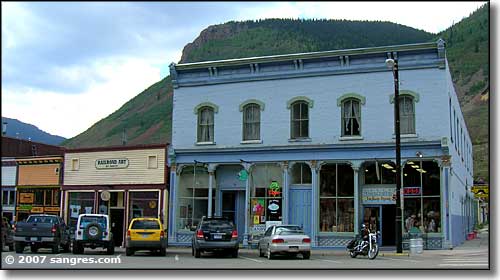
On Greene Street
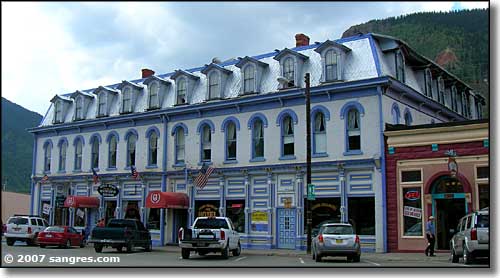
The Grand Imperial Hotel
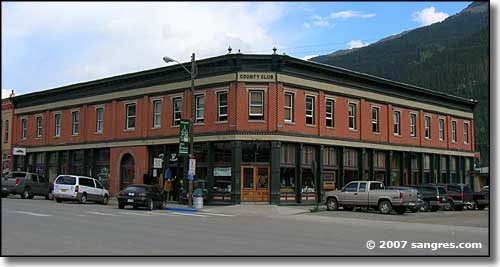
The County Club Building on Greene Street
Clicking on one of the photos below will bring you a larger version of that photo
To return, use the back button in your browser.
Latitude: 37.8125°N
Longitude: 107.663°W
Incorporated: November 15, 1885
Elevation: 9,308'
Education:
High School or Higher: 91.8%
Bachelor's Degree or Higher: 42.9%
Graduate or Professional Degree: 16.6%
2011 Cost of Living Index for Silverton: 95.2
Estimated Median Household Income: $43,900
Estimated Median Home Value: $284,300
Median Resident Age: 43.5 Years
Major Industries:
Lodging & Food Services, Construction, Government, Educational Services, Professional Services, Arts & Entertainment, Health Care, Natural Resources
Unemployed (March 2011): 19.5%
Population Demographics: 2010
| Total Population | 637 |
| Males | 353 |
| Females | 284 |
| Population by Age | |
| Under 18 | 111 |
| 18 & over | 526 |
| 20-24 | 24 |
| 25-34 | 97 |
| 35-49 | 146 |
| 50-64 | 177 |
| 65 & over | 80 |
| Population by Ethnicity | |
| Hispanic or Latino | 77 |
| Non Hispanic or Latino | 560 |
| Population by Race | |
| White | 589 |
| African-American | 0 |
| Asian | 8 |
| Native American | 2 |
| Hawaiian or Pacific Islander | 0 |
| Other | 23 |
| Two or more | 15 |
Alpine Loop Back Country Byway - The San Juan Skyway
San Juan Mountains - Silverton Mountain Ski Area
State Trustlands & Wildlife Areas
National Park Service Sites - BLM Sites - National Wilderness Areas - Unique Natural Features
Outdoor Sports & Recreation - Ski & Snowboard Areas - Photo Galleries - Colorado Mountains
